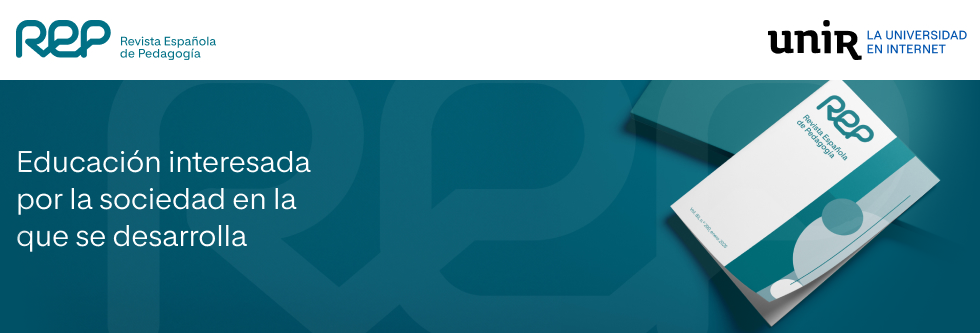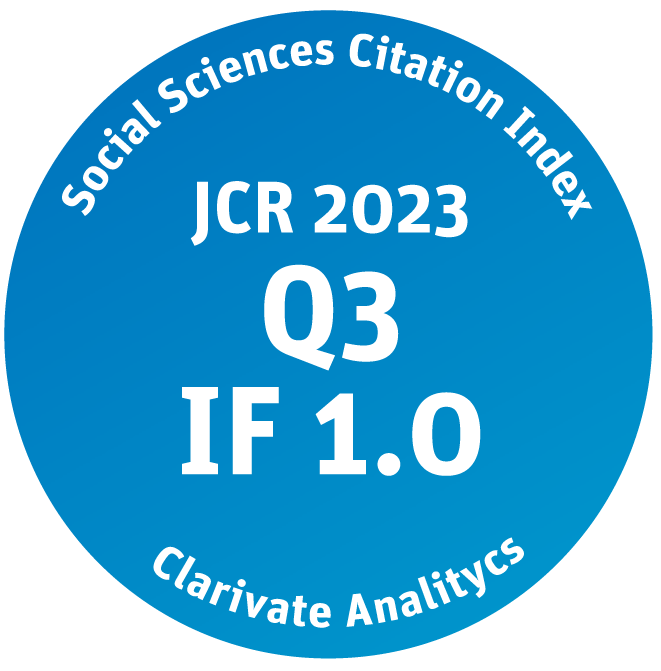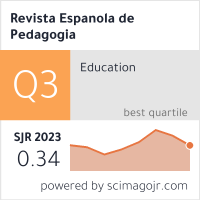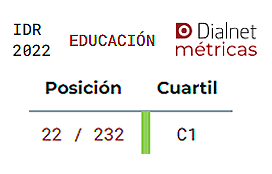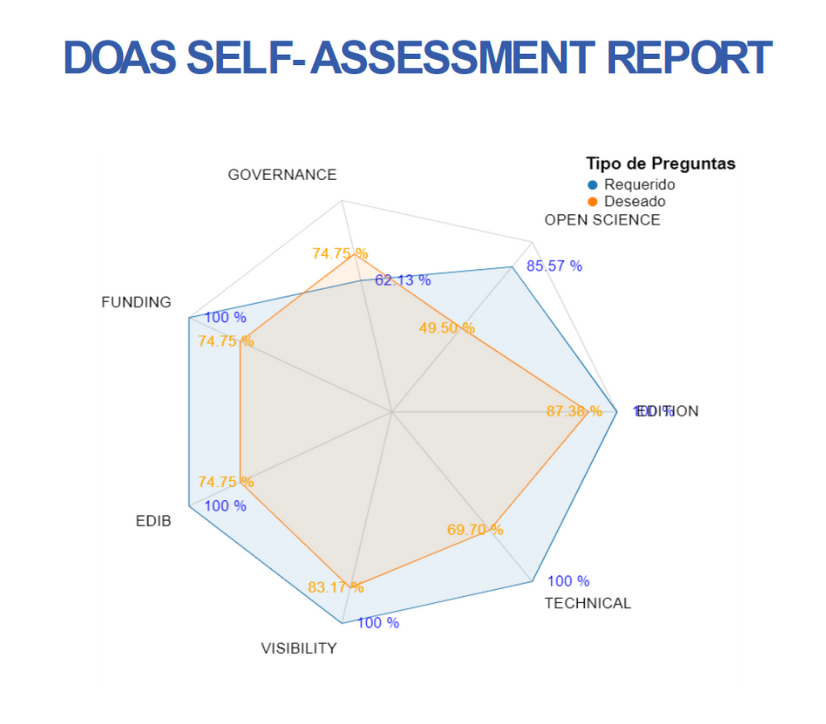Abstract
After an initial stage of exponential growth in MOOCs, a need has arisen of to address several different aspects of the-se innovations in order to understand and develop them from different perspectives, such as this one, with the analysis of pedagogical dimensions aimed at improving course design. This paper presents an updated review of the literature and proposes five research lines for an in-depth approach. This study is part of a broader research project1 and here analyses 356 MOOCs delivered in Portuguese by 16 different platforms. The research design is quantitative, non-experimental and transversal.
An adaptation of the MOOC Educational and Interactive Indicators Instrument —INdiMOOC-EdI— was used in the data collection process. The reliability and internal consistency analysis of that adaptation for the whole sample resulted in a Cronbach alpha score of 0.731. The data obtained enable us to classify the existing MOOCs in Portuguese according to descriptive, formative, and interactive components. These different types correlate with the quality indices, being negative in the first dimension (descriptive) and positive in the second and third ones (formative and interactive).
Cite this article as: Lemos-de-Carvalho-Júnior, G., Raposo-Rivas, M., Cebrián-de-la-Serna, M., & Sarmiento-Campos, J. A. (2017). Análisis de la perspectiva pedagógica de los MOOC ofertados en lengua portuguesa | Analysis of the pedagogical perspective of the MOOCs available in Portuguese. Revista Española de Pedagogía, 75 (266), 101-119. doi: 10.22550/REP75-1-2017-06
- Keywords:
- content analysis
- platforms
Referencias | References
Aguaded, I., Vázquez-Cano, E. & López-Meneses, E. (2016). El impacto bibliométrico del movimiento MOOC en la Comunidad Científica Española. Educación XXI, 19 (2), 77-104. doi: http://dx.doi.org/10.5944/educxx1.16454
Bartolomé-Pina, A. (2013). Qué se puede esperar de los MOOC. Comunicación y Pedagogía: Nuevas Tecnologías y Recursos Didáctico 269, 49-56. Retrieved from: https://dialnet.unirioja.es/servlet/articulo?codigo=4560279
Bartolome-Pina, A. & Steffens, K. (2015). Are MOOCs promising learning environments? Comunicar: Media Education Research Journal, 22 (44), 91-99. doi: http://dx.doi.org/10.3916/C44-2015-10
Bates, A. (2014). Special edition on research on MOOCs. Distance Education. Retrieved from: http://www.tonybates.ca/2014/08/14/special-edition-on-research-on-moocs-in-the-journal-distance-education/
Chiappe-Laverde, A., Hine, N., & Martínez-Silva, J. (2015). Literature and practice: A critical review of MOOCs. Comunicar, 22 (44), 9. doi: http://dx.doi.org/10.3916/C44-2015-01
Conole, G. (2015). Designing effective MOOCs. Educational Media International, 52 (4), 239. doi: http://dx.doi.org/10.1080/09523987.2015.1125989
Daniel, J. (2012). Making sense of MOOCs: Musings in a maze of myth, paradox and possibility. Journal of Interactive Media in Education, 3. doi: http://dx.doi.org/10.5334/2012-18
Downes, S. (2007). What connectivism is. Retrieved from: http://goo.gl/xlh0F7
Downes, S. (2011). CCK08 - The distributed course. The MOOC Guide. Retrieved from: https://goo.gl/fFcKjT
Downes, S. (2012). Connectivism and Connective Knowledge Essays on Meaning and Learning Networks. National Research Council Canada. Retrieved from: http://goo.gl/hIglxL
Dron, J. & Ostashewski, N. (2015). Seeking connectivity freedom and instructivist safety in a MOOC. Educación XXI. Revista de la Facultad de Educación, 18 (2), 51-76.
Ebben, M. & Murphy, J. S. (2014). Unpacking MOOC scholarly discourse: A review of nascent MOOC scholarship. Learning, Media and Technology, 39 (3), 328-345. Retrieved from: https://www.learntechlib.org/p/153870
Ehlers, U. D. (2011). Extending the territory: From open educational resources to open educational practices. Journal of Open, Flexible and Distance Learning, 15 (2), 1-10. Retrieved from: http://goo.gl/8QgF0V
Fini, A. (2009). The technological dimension of a massive open online course: The case of the CCK08 course tools. The International Review of Research in Open and Distance Learning, 10 (5).
Gallego, M. J., Gámiz, V., & Gutiérrez, E. (2015). Tendencias en la evaluación del aprendizaje en cursos en línea masivos y abiertos. Educación XX1, 18 (2), 77-96. doi: http://dx.doi.org/10.5944/educXX1.12935
Guo, P.J., Kim, J., & Rubin, R. (2014). How video production affects student engagement: An empirical study of MOOC videos. Proceedings of the First ACM Conference on Learning @ Scale Conference, 41-50. doi: http://dx.doi.org/10.1145/2556325.2566239
Hair, J. F., Anderson, R. E., Tatham, R. L., & Black, W. C. (2001). Análisis Multivariante (5th ed). Madrid: Prentice Hall. Herman, R. (2012). The MOOCs are coming. The Journal of Effective Teaching, 12 (2), 1-3. Retrieved from: http://goo.gl/5mkogJ
Hernández, R., Fernández, C. & Baptista, P. (2010). Metodología de la investigación. Madrid: Pearson.
Ho, A. D. & others (2014). HarvardX and MITx: The first year of open online courses, fall 2012-summer 2013. Rochester, NY. doi: http://dx.doi.org/10.2139/ssrn.2381263
Jona, K., & Naidu, S. (2014). MOOCs: Emerging research. Distance Education, 35 (2), 141-144. doi: http://dx.doi.org/10.1080/01587919.2014.928970
Koper, R. (2001). Modeling units of study from a pedagogical perspective: The pedagogical meta-model behind EML. Preprint. Retrieved from: http://goo.gl/IL0ZLE
Lip, S., Zimmaro, D., Strader, R., Bier, N., & Thille, C. (2014). An approach to skill mapping in online courses MOOC. Retrieved from: http://www.moocworkshop.org/s141/
Liyanagunawardena, T., Adams, A., & Williams, A. (2013). MOOCs: A systematic study of the published literature 2008-2012. The International Review of Research in Open and Distance Learning, 14, 3, 202-227. Retrieved from: http://www.irrodl.org/index.php/irrodl/article/view/1455/2531
López, E., Vázquez, E., & Román, P. (2015). Analysis and implications of the impact of MOOC movement in the scientific community: JCR and Scopus (2010-13). Comunicar, 44, 73-80. Retrieved from: http://dx.doi.org/10.3916/C44-2015-08
McAuley, A., Stewart, B., Siemens, G., & Cormier, D. (2010). The MOOC Model for Digital Practice. Retrieved from: http://goo.gl/ju3LRR
McMillan, J. & Schumacher, S. (2005). Investigación educativa. Madrid: Pearson.
Monedero-Moya, J., Cebrián-Robles, D., & Desenne, P. (2015). Usability and satisfaction in multimedia annotation tools for MOOCs. Comunicar, 22 (44), 55-62. doi: http://dx.doi.org/10.3916/C44-2015-06
Muellner, L. (2015). Annotations and the ancient Greek hero: Past, present, and future. Comunicar, 44, 45-53. doi: http://dx.doi.org/10.3916/C44-2015-05
Natividad, G., Mayes, R., Choi, J-I., & Spector, J. M. (2015). Balancing stable educational goals with changing educational technologies: Challenges and opportunities. E-Mentor.
Pérez, C. (2005). Métodos estadísticos avanzados con SPSS. Madrid: Thomson. Raposo-Rivas, M., Martínez-Figueira, E., & Sarmiento-Campos, J.A. (2015). Un estudio sobre los componentes pedagógicos de los cursos online masivos. Comunicar: Media Education Research Journal, 22 (44), 27-35. doi: http://dx.doi.org/10.3916/C44-2015-03
Rodríguez, A., & Martínez, L. (2011). Guía sobre normalización en la accesibilidad de las TIC. CENTAC. Retrieved from: http://www.centac.es/es/content/guí-de-normalización-en-la-accesibilidad-de-las-tic
Roig, R. & others (2014). Evaluación de la calidad pedagógica de los MOOCs. Revista de Currículum y Formación del Profesorado, 18 (1), 27-41.
Saadatmand, M. & Kumpulainen, K. (2014). Participants’ perceptions of learning and networking in connectivist MOOCs. MERLOT Journal of Online Learning and Teaching, 10 (1), 16-30.
Sangrà, A., González, M., & Anderson, T. (2015). Metaanálisis de la investigación sobre MOOC en el período 2013-2014. Educación XX1, 18 (2), 21-49. doi: http://dx.doi.org/10.5944/educXX1.13463
Serrano, J. & Cebrián, D. (2014). Usabilidad y satisfacción de la e-rúbrica. REDU. Revista De Docencia Universitaria, 12 (1), 177-195. Siemens, G. (2005). Connectivism: A learning theory for the digital age. International Journal of Instructional Technology and Distance Learning. Retrieved from: http://goo.gl/kRXbS6
Yousef, A. M. F. & others (2014). The state of MOOCs from 2008 to 2014: A critical analysis and future visions. In S. Zvacek, M. T. Restivo, J. Uhomoibhi, & M. Helfert (Eds.), Computer Supported Education, 305-327. Springer International Publishing. Retrieved from: http://link.springer.com/chapter/10.1007/978-3-319-25768-6_20
Zapata-Ros, M. (2012). Teorías y modelos sobre el aprendizaje en entornos conectados y ubicuos. Bases para un nuevo modelo teórico a partir de una visión critica del «conectivismo». e-Lis. e-prints in library & information science. Retrieved from: http://eprints.rclis.org/17463/
Citación recomendada | Recommended citation
de Carvalho Junior, G. L.,
&
Raposo-Rivas, M.
(2017)
.
Analysis of the pedagogical perspective of the MOOCs available in Portuguese.
Revista Española de Pedagogía, 75(266).
https://www.revistadepedagogia.org/rep/vol75/iss266/12
Licencia Creative Commons | Creative Commons License
Esta obra está bajo una licencia internacional Creative Commons Atribución-NoComercial 4.0.
This work is licensed under a Creative Commons Attribution-NonCommercial 4.0 International License
